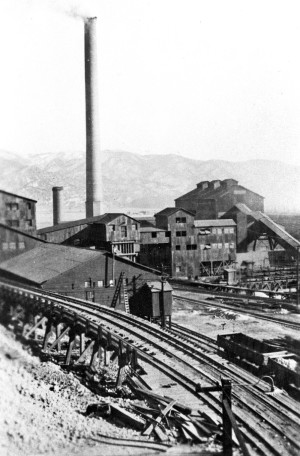By John Mattingly
I heard recently on the radio that U.S. consumers waste about 40% of the food they purchase from restaurants, supermarkets, and box stores. At first I wondered how this statistic was gathered. There must be a lot of dedicated “garbologists” out there, running various waste proxies and decomposition algorithms on their laptops.
Coming from a family of clean plates, leftovers, bulk-buying, and a general respect for the food placed on the table, I doubted the 40% figure, but not the observation that people in this country waste quite a bit of food. Part of this stems from the fact that, despite sensations to the contrary, food is actually cheap in the U.S. when expressed as a percentage of citizen income, and especially if we look at the cost of food, not processing, packaging, and preparation.
I recently calculated that, even with the higher commodity prices today due to the drought in the Midwest and commodity inflation, I could eat a healthy diet for less than $300 a year. Yes, a year. I would be buying grains by the bushel, and everything else in bulk. No packaging. This would not be a stimulating diet with lots of variety, and would include very little meat, but when you realize that the cost of a single bag of potato chips fetches fifty pounds of potatoes, and the price of a good loaf of bread would buy thirty pounds of wheat, you can see where I going with this.
We’ve had a cheap food policy in the U.S. for a long time – more specifically a cheap calorie policy due mostly to high-fructose corn syrup – but most especially since 1974, when Earl Butz and Richard Nixon did away with the set-aside programs in U.S. agriculture. Reacting to the first oil embargo, Butz and Nixon created a commodity-subsidy policy based on price supports that stimulated the famous “fencerow-to-fencerow production” machine that has U.S. farmers growing mostly corn and soybeans today (a story detailed in prior articles).
U.S. farmers are seldom paid to “not produce,” but clearly are paid to over-produce the government-supported commodities.
So, given that food is relatively cheap, wasting 40% (if that figure is even close to accurate) isn’t quite the same as tossing out 40% of your computers, or TVs, or cars, or sofas, or other precious consumer goods. It’s just food, and there’s more of it at the store, cheap.
I concede this a harsh analysis, indulging the obvious bias of an old farmer, so I must allow that there are several other, fine-grained reasons why people in the U.S. are wasteful when it comes to food.
First, portion sizes are on the increase. Food is often offered in quantities greater than we can use, and many items are priced in multiples that encourage buying more. We are conditioned to think that buying in volume results in a discount, but that’s only true if we can actually use the excess before it perishes. There’s an old joke about the guy who came home with two hundred pounds of parsnips. Guess how many of those parsnips were actually used.
Curiously, in a related but odd phenomenon, I’ve noticed that sometimes supermarkets price an item at, say, “Four for $10,” encouraging the customer to buy four, when the price of one of the item is $2.50. But I see people consistently responding to the idea that buying four is somehow a bargain.
Second, the freshness date on food is sometimes misinterpreted as being the spoilage date. The freshness date actually means the date to which the food is best, not the date at which it should be trashed. My grandmother used to say, “Don’t eat anything that won’t spoil, but eat it before it does.” She came from a generation in which refrigeration was accomplished with an ice box, and most of those were just big enough for necessities.
It’s actually difficult to predict when a given food item is going to spoil. It depends on whether or not it has been opened, how quickly and efficiently it was refrigerated, and so forth. I accidentally left an unopened carton of half and half in a back corner of the fridge for eleven months. Upon opening it, it was fine, a good nine months after the “best if used before” date.
Third, people in the U.S. have large refrigerators. These huge storage units can hold a lot more food than most people can eat, and the fridge tends to hide things so that certain stuff gets buried in the back, or under a bunch of stuff and spoils from failure to find.
We learned this recently when we spent some time on the farm in a small bunkhouse with a really small fridge. At first we thought the fridge would be too small, but over time, we came to appreciate that it was actually just right. It held the amount of food we typically consumed between trips to the store, and it was small enough that we could see everything.
Finally, it seems to me that a lot of people in the U.S. don’t know how or what to eat. Humans used to figure out what to eat from their parents and other tribe members. But, today we have decided, for some strange reason, to trust our diets to food scientists, who warn us about what will likely kill us, what supplements will save us, and what triangle of foods is best for us.
This domination of the food scientists has led to some very odd outcomes, such as whole wheat being processed down into its components, then fortified with various vitamins and minerals that were removed in the processing, and finally offered back to us in some chemical feast of ingredients, some of which defy pronunciation.
In this world of strange and nonsensical concoctions aka “food,” it may be little wonder that we throw a lot of it away because we don’t actually recognize it as food.
Whether the 40% waste claim of garbologists is correct or not, a little prudence in purchasing more in bulk, and understanding better what it is exactly we are eating, would go a long way toward making the most of the money we spend on food. This is especially true given that it appears food will be more expensive in the months to come, due to the drought, and economic conditions that always press food prices higher.
Inflation, I hear from Ben Bernanke, is less than two percent. That calculation doesn’t include food or fuel. Since the U.S. food production system is largely dependent on fuel, it’s hard to understand the logic of omitting these two key ingredients. But no one called to ask me what I thought. They only call to tell me what to think.
John Mattingly cultivates prose, among other things, and was most recently seen near Creede.




